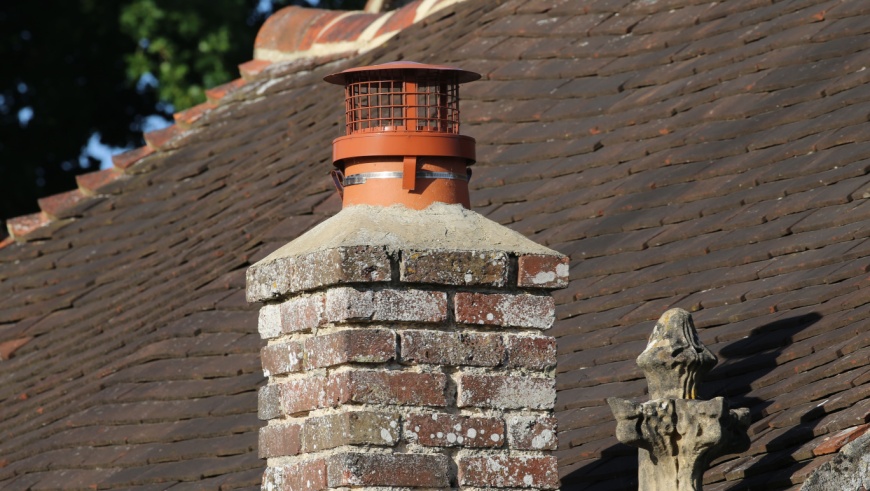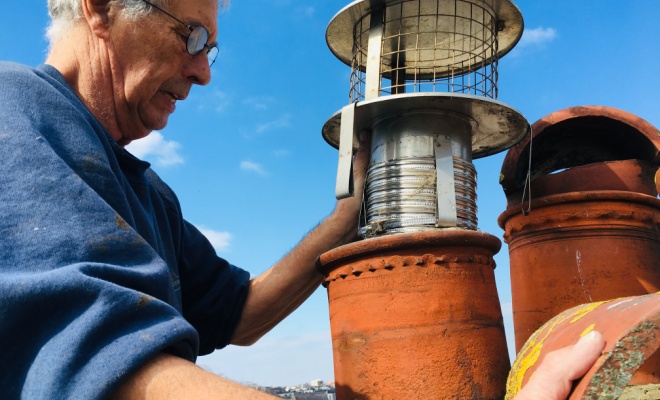Chimney Cowl Fitting Cost
Last updated 1st July, 2024
Would you like to find out how much chimney cowl fitting will cost?
In this ultimate cost guide, we cover all you need to know about having chimney cowls fitted, including prices of materials, labour fees and time frames. On average, you should expect to pay at least £150, including the chimney cowl fitters cost.
For more information on fitting a chimney cowl - read below!

How Much To Fit a Chimney Cowl?
The average cost of having a chimney cowl fitted will depend mainly upon the height of the chimney (most chimneys can be reached with a roof ladder).
Are there any additional costs to consider?
If scaffolding or a hydraulic mobile elevated work platform is required, then yes, this will involve additional costs).
But as a rough guide assuming no scaffold, then to supply and install a multi-fuel cowl on a chimney with easy access should cost around £150.
An experienced tradesmen shouldn't have any problem fitting a chimney cowl and will usually only take 1-2 hours at most.
Chimney Cowl Fitting Prices
Here are a few average costs for installing a chimney cowl:
| Type of Cowl | Scaffolding? | Avg. Cost | Duration |
|---|---|---|---|
| Specific Cowl | No | £125 | 1 hour |
| Multi-Purpose Cowl | No | £150 | 1 hour |
| Specific Cowl | Yes | £250 | 2 hours |
| Multi-Purpose Cowl | Yes | £275 | 2 hours |
Cost Breakdown
Individual costs for installing a multi-purpose cowl on a chimney with no scaffolding required, just a roof ladder - Total Cost: £150
Materials
£50
Tradesmen
£100
Scaffolding
£0
What the Job Entails
There are hundreds of different designs of chimney pots and in the majority of cases an open chimney pot is the best type of chimney termination available, so therefore this type is by far the most common. However, there are occasions when an open chimney pot is not optimal, for example if you wish to keep birds, squirrels and rain out of a chimney flue, or are having problems with downdraught’s.
For these situations there are number of different types of chimney cowl but the multi-purpose chimney cowl that is attached to the chimney using a strap is the most popular as they are suitable for all types of fuels (gas, wood, coal and oil). Chimney cowls prevent down-drafts, stop birds getting into the chimney and also keep the rain and snow out.
They can even provide ventilation for chimneys that are no longer used to prevent condensation. Once a multi-fuel chimney cowl has been fitted, you shouldn’t ever need to replace it as even if you change the type of fireplace or stop using the chimney altogether, the multi-purpose cowl can be left in place.
You can buy cheaper cowls that are designed for specific fuel types, but the savings are minimal so it makes sense to pay slightly extra and get a multi-purpose cowl fitted in the first place. The job itself is pretty straightforward and usually just involves fixing the cowl by way of a simple adjustable metal strap the existing chimney pot.
You can save money when installing a chimney cowl by having the work done at the same time as other roofing work, for example such as replacing roof tiles, cleaning moss from tiles, repairing lead flashing or chimney re-pointing. It doesn’t take long to install a multi-purpose cowl so if you have tradesmen men already on the roof it will cost very little for them to install it while they are up there.
The multi-purpose type cowl normally has a bird cage inside it to prevent birds entering the chimney. If you are burning solid fuels like coal then normally this cage should be removed to prevent it becoming blocked with solid fuel remnants and burnt carbon.

Fitting one chimney cowl is quite a straightforward job, so if you hire a roofer to do this job he will probably apply a minimum price to cover their time on the job, travel time, fuel costs etc.
This type of pricing is applied to many small jobs, as it is not worth them coming to your property for a 20 minute job if they can only charge for their time. So if possible get other small roofing jobs carried out at the same time.
One of the more popular mistakes when fitting chimney cowls is to fit them on the wrong chimney pot! Yes it sounds like a silly obvious mistake - but it happens all the time. If fitting the cowl yourself then you need to ensure you have identified the right chimney pot to work on by carrying out a simple smoke test - the last thing you want to do is fit a new cowl on your neighbours chimney pot free of charge!
As with any roofing jobs, if doing this yourself you need to take care working at height and ensure you are using the correct safety equipment.
FAQs
In addition, birds love nesting in chimneys, and have a habit of flying unexpectedly into your living room creating mess everywhere! Multi-purpose cowls prevent even small birds from being able to access the chimney, but please note that they should only be fitted when the birds have left the nest, not before!
The revolutionary Windkat system offers an anti-downdraught feature without moving parts and works well to regulate the draw even in high winds, thereby providing optimum burning conditions and increased efficiency.










